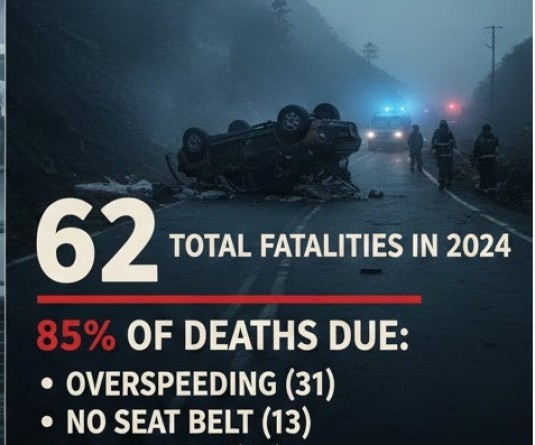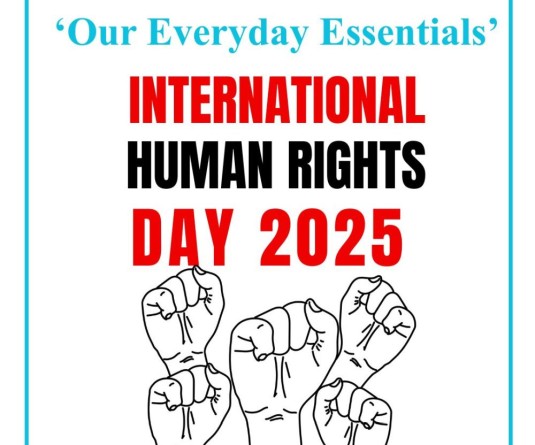A poorly conditioned Government quarter left neglected at Tseminyu
Aheli Moitra & Bensinle Tep
Kohima | February 4
Kohima district is an anomalous one. The town of Kohima is said to be the “biggest village” of the district. For people from the district’s far-flung villages though, it is a city. That it is the state capital and houses government machinery finds no relevance to villages even close to it.
“We cannot afford to pay our children’s school fee, or buy them school uniforms. Till date, our only source of income is from National Rural Employment Guarantee Schemes (NREGS),” says the village council chairman of Terogunyu village in Tseminyu sub-division of Kohima district. Due to lack of industry and jobs, people turn to farming to sustain themselves. What they build and earn seems unrelated to a larger vision.
“We used NREGS funds to construct the village agri-link road and, later, internal village infrastructure such as staircases.” The approach to this village, from National Highway 2, is a serpentine stretch of rock and dust. This is the same route the villagers will take to visit the closest health care centre in Tseminyu town, an hour and a half walk away. Public transport remains evasive, with one bus to Kohima town and Dimapur each in a day.
35 villages under the Tseminyu sub-division have to make do with two Primary Health Centres (PHCs) and one Community Health Centre (CHC). In an emergency, one ambulance plies the sick. The rest do not find themselves worthy of even a dispensary.
Villages here have had electricity and water connections for 50 years but both are hard to come by.
“Electric lines came to Tseminyu in the 1960s but are badly maintained. Our transformer broke down thrice last year, and took 50-60 days to be repaired each time. That’s half the year gone,” highlights John Semy, General Secretary of Rengma Hoho. “Electric lines are sagging and some have gone under bamboo grooves leading to frequent short circuits but no one bothers to repair them. Electricity is such a rarity that when it is there, children are more worried about when the lights will go,” explains John dramatically.
He also explains how e-classrooms have been introduced but due to lack of electricity, computer lessons cannot be imparted to the children. This keeps children here from accessing the quality of education available to those in Kohima or Dimapur towns. Students in the peripheries of Kohima district are then unable to compete with others at the national or, even, state level.
“There are a number of primary schools in the seven ranges of Tseminyu. They are dependent on RMSA or SSA schemes, and face severe infrastructural hurdles. Schools are either under or overstaffed. Some students don’t even make the matriculation pass mark. How are they expected to compete with students from good schools?” wonders Zukeya Woch, chairman of Chunlikha village council. In all these years, Tseminyu has produced one IAS official and less than handful Nagaland civil servants.
Mortal dependence on Centrally Sponsored Schemes (CSS), and the lack of their monitoring, has birthed a number of these problems. “75% of the funding for CSS comes from the Centre while 25% is the contribution from the State. We have found out from local governance units that the State has not been providing its share in a number of Schemes, and many works have remained incomplete,” reveals Semy. The State might be holding funds but so are local development bodies.
“A few elites run the Village Development Board (VDB) and are in-charge of the money that comes from top. Not only do we get only part of the whole fund, we also have to please them to get even that,” discloses the GB of Tsiesema village. Many people in this village continue to face poverty.
Unable to communicate with their government, some have suggested CBI enquiries into distribution of funds. In the meantime, communities in Kohima have taken up public works themselves “We pool in voluntary funds and get potholes in the village repaired,” says a citizen of Kohima Village. For Kohima Village this kind of fund mobilisation is possible. Not so for others less fortuned. In Tseminyu, 33 Kms of the NH-2 was repaired by the youth of Terogunyu, the Rengma Hoho and the Council of Rengma Baptist Churches once each with the help of local mud and gravel. The repair washed away with the rain.
With the Nagaland assembly election round the corner, people are not asking for fresh projects from a fresh leadership, but old infrastructure to be repaired, restored and maintained. And better communication between the government they elect and themselves; transparency and accountability. Without such a guarantee, political flare ups remain a vivid possibility in the capital’s neighbourhood.





.jpg)
